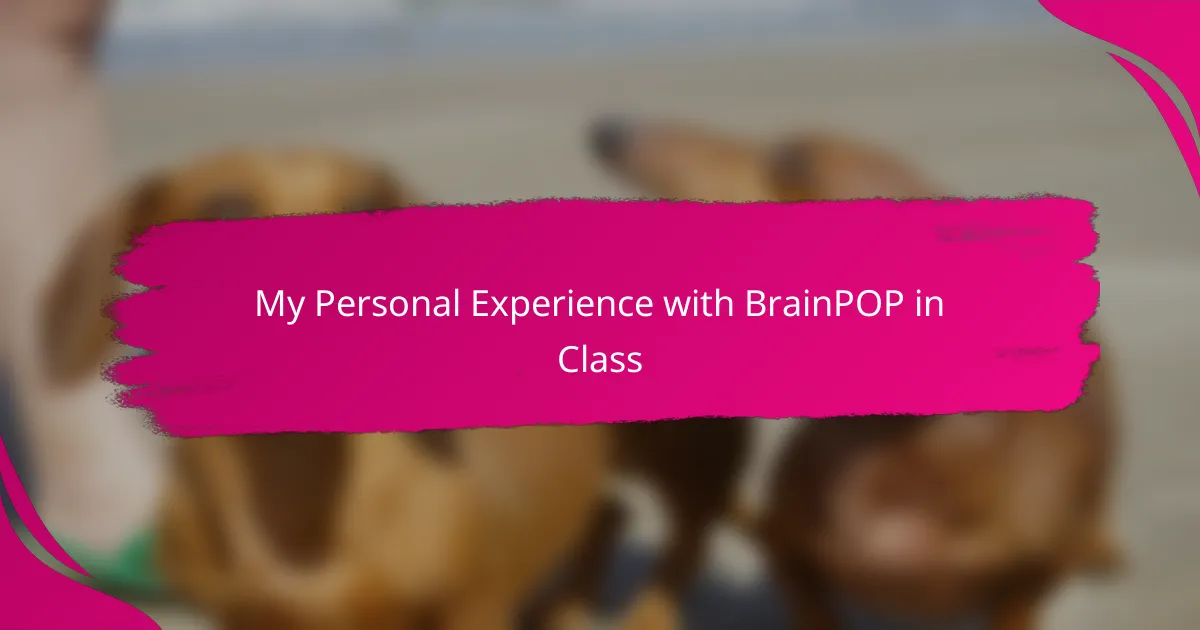Key takeaways
- BrainPOP enhances learning by breaking down complex topics into engaging, bite-sized content, fostering curiosity in children.
- The platform adapts to different learning styles, encouraging critical thinking through interactive quizzes that make learning feel like a fun challenge.
- Using BrainPOP at home promotes shared learning experiences and deepens parent-child connections, turning education into a collaborative adventure.
- While BrainPOP has many benefits, challenges include occasional quiz repetition, the need for reliable internet, and the desire for deeper exploration of complex subjects.
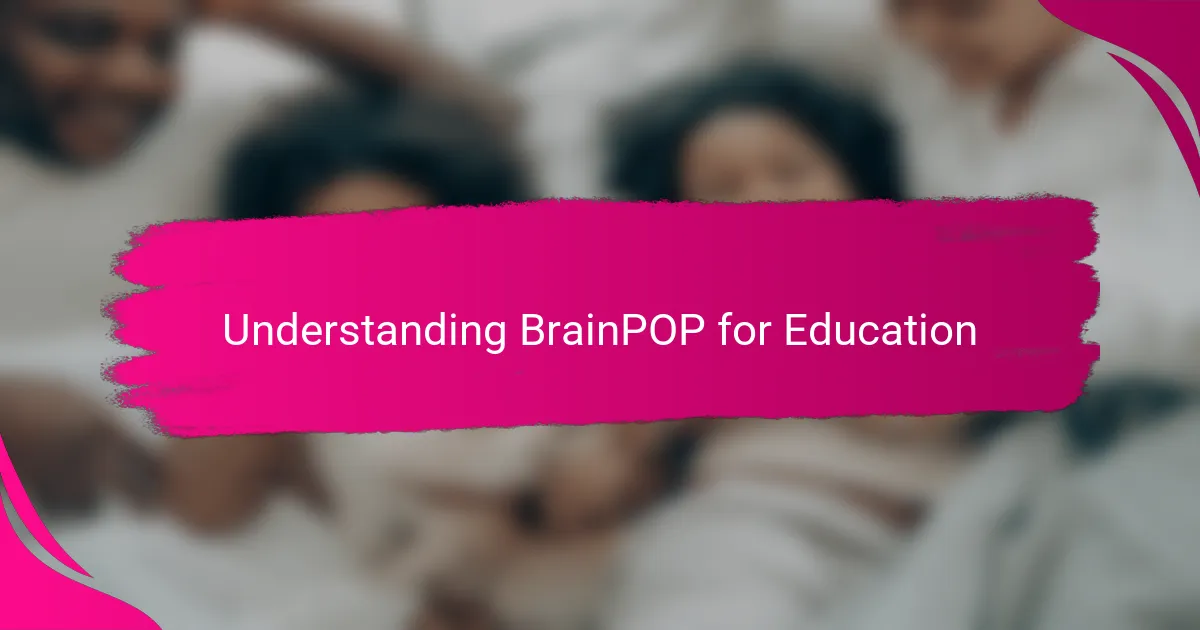
Understanding BrainPOP for Education
When I first encountered BrainPOP in my child’s classroom, I wasn’t entirely sure what to expect. Is it just another digital tool, or does it truly enhance learning? As I watched my child’s enthusiasm grow while exploring its interactive videos and quizzes, I realized BrainPOP’s strength lies in making complex topics approachable and fun.
What struck me most was how BrainPOP breaks down subjects into bite-sized pieces that actually hold a young learner’s attention. I’ve seen my child not only absorb facts but also develop curiosity, asking deeper questions after each lesson. It made me appreciate how educational technology, when done right, can be more than just screen time—it becomes an engaging discovery process.
Have you ever wondered if an educational platform can build both confidence and knowledge simultaneously? BrainPOP, in my experience, manages to strike that balance by blending clear explanations with relatable characters. This approach helps kids feel comfortable tackling new subjects, which, from a parent’s perspective, is truly reassuring.
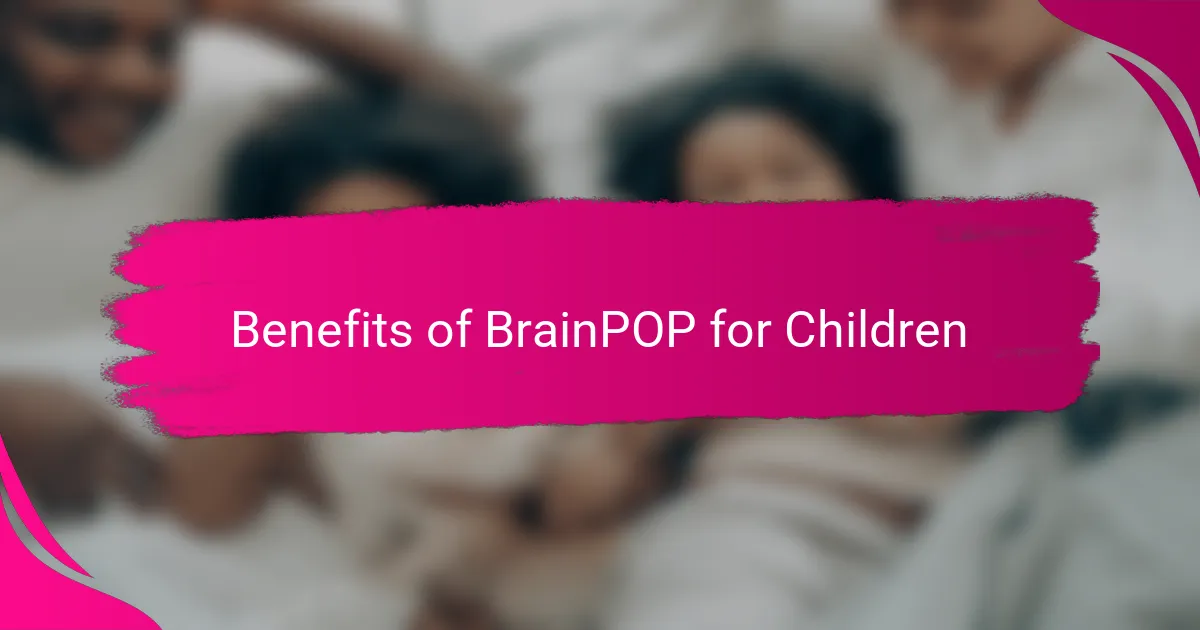
Benefits of BrainPOP for Children
One of the biggest benefits I noticed with BrainPOP is how it adapts to different learning styles. My child, who sometimes struggles with dense textbooks, found the animated videos much easier to understand. Have you ever seen a child’s face light up when learning suddenly clicks? That’s exactly what happened here.
Another great advantage is the interactive quizzes. They don’t just test knowledge—they encourage kids to think critically and reflect on what they’ve learned. I remember my child eagerly asking to “try again” to beat their previous score, which made me realize learning was turning into a fun challenge rather than a chore.
Also, BrainPOP fosters independence in learning. Watching my child navigate topics on their own was rewarding and, honestly, a relief. It’s like having a knowledgeable tutor available anytime, giving them confidence to explore subjects without feeling overwhelmed. Wouldn’t every parent want their child to experience that kind of self-driven success?
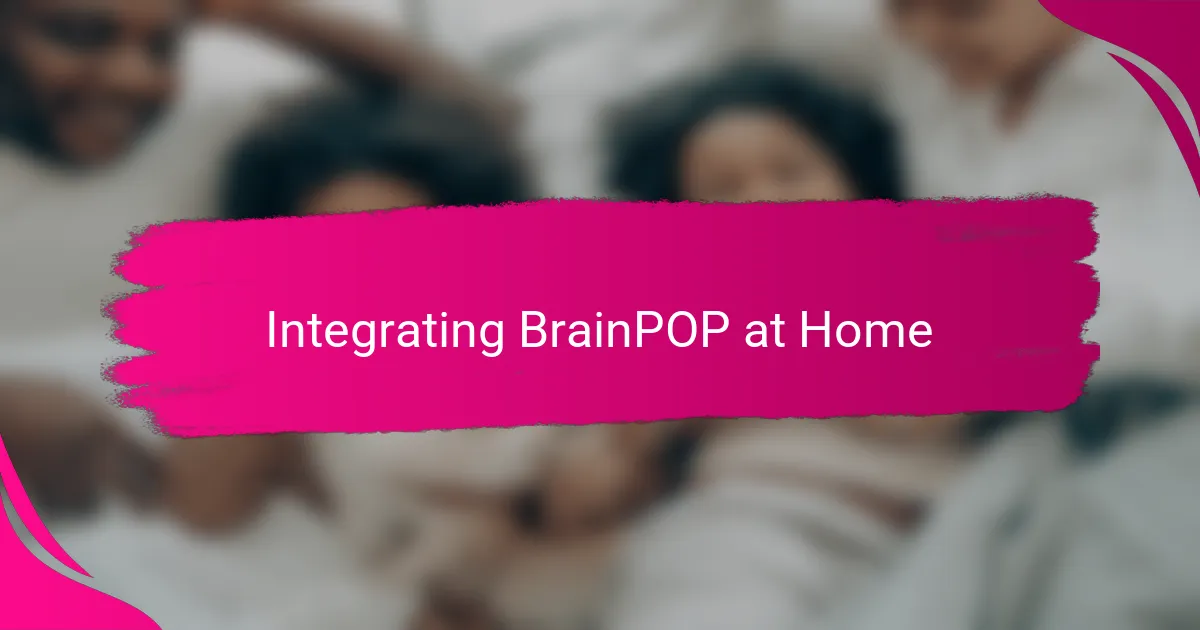
Integrating BrainPOP at Home
Bringing BrainPOP into our home routine was easier than I expected. At first, I wondered if my child would prefer it only at school, but soon I noticed how they’d ask to watch a video or take a quiz after homework. It felt like a natural extension of their classroom curiosity.
I also found that using BrainPOP together opened up conversations we wouldn’t normally have. For instance, after watching a science video, my child excitedly explained concepts to me, turning our living room into a little learning lab. Have you ever experienced how sharing in your child’s discoveries can deepen your connection? This was that moment for us.
What surprised me most was seeing my child take initiative on weekends, exploring topics that interest them without any prompting. BrainPOP became more than just an educational tool; it became a way to nurture a genuine love of learning at home, which is priceless in today’s busy world.
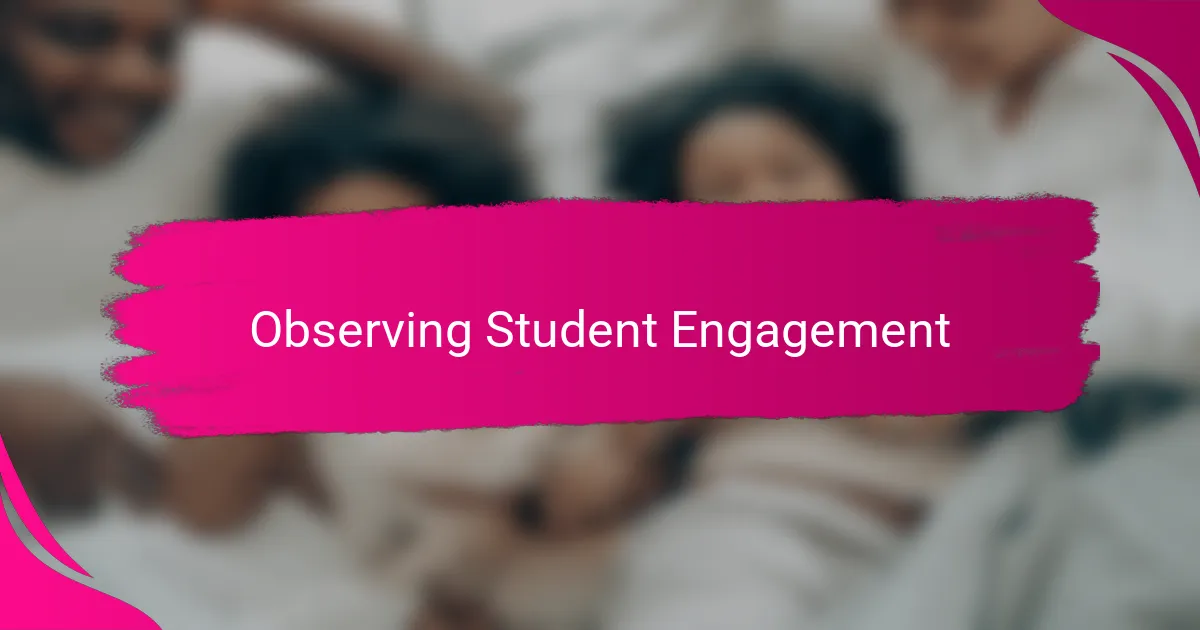
Observing Student Engagement
Watching my child interact with BrainPOP during class was eye-opening. I noticed how their eyes would light up, fully focused on the screen, even during topics that used to feel dull or difficult. Have you ever seen that kind of genuine engagement, where the usual distractions seem to melt away? It’s quite something.
Sometimes, it wasn’t just my child but the whole classroom that seemed drawn in. The animated characters and clear explanations prompted hands to shoot up with questions, showing real curiosity rather than just repetitive answers. From my perspective, seeing students so eager to participate transformed the usual classroom energy into something vibrant and lively.
I also caught moments when kids would discuss what they’d just learned with each other, sharing insights and sometimes even helping classmates who looked puzzled. This peer interaction felt organic, not forced, and underscored how BrainPOP encourages teamwork and deeper understanding. Isn’t that the kind of engagement every parent dreams their child experiences at school?

Challenges Using BrainPOP
Using BrainPOP in class wasn’t without its hiccups. At times, I noticed my child getting frustrated when the quizzes repeated similar questions, making it feel more like a test than an exploration. Have you ever seen a child’s enthusiasm wane because something meant to be fun starts to feel like busywork? That happened occasionally here.
Another challenge was the reliance on internet connectivity. There were moments when slow loading times interrupted the flow, which disrupted my child’s focus. It made me realize how dependent these digital tools are on smooth tech support, something not every classroom can guarantee.
Lastly, while BrainPOP covers a wide range of topics, sometimes I wished it dove deeper into complex subjects. My child would finish a video and ask, “But what about this?” It reminded me that no tool is perfect, and sometimes traditional teaching or extra resources are still necessary to satisfy a curious mind.
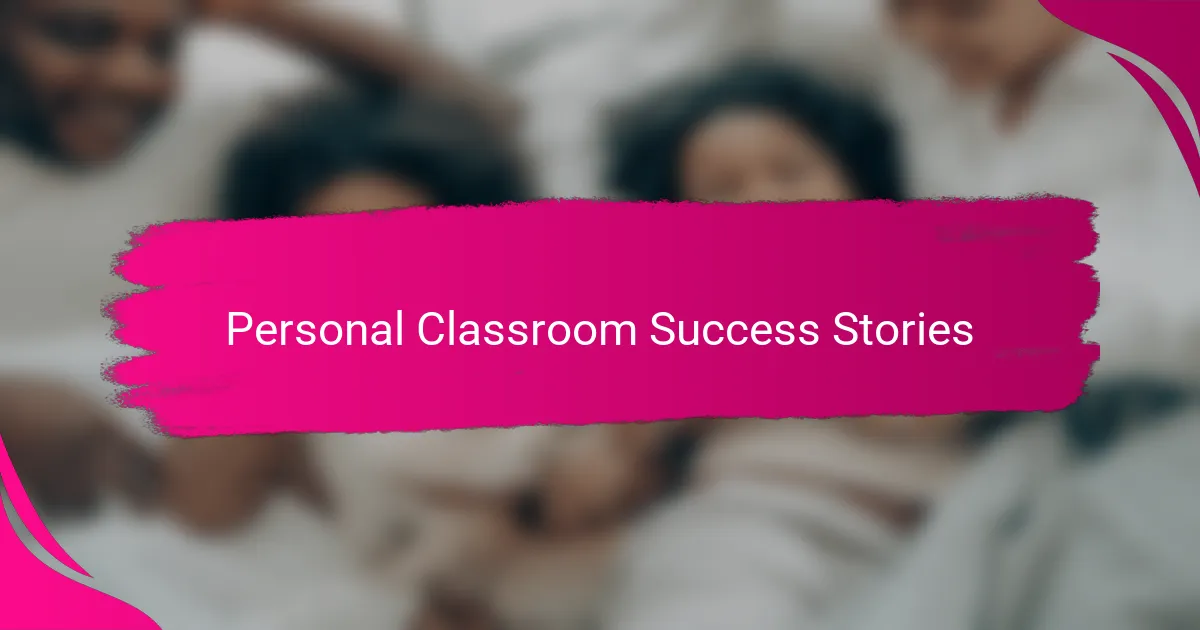
Personal Classroom Success Stories
One story that stands out to me is when my child, who usually hesitates to speak up in class, eagerly shared insights from a BrainPOP video during a science discussion. That moment felt like a breakthrough—a clear sign that the platform wasn’t just delivering content but building genuine confidence. Have you ever witnessed a shy child suddenly find their voice? It’s a powerful reminder of how the right tools can unlock potential.
Another memorable success happened during a group project. Kids used BrainPOP videos as their starting point, which sparked lively debates and creative ideas. It was amazing to see students relying on what they learned from the platform to support their arguments and help classmates understand complex topics. Isn’t that the kind of collaborative learning every parent hopes their child experiences?
I also recall a day when the teacher used BrainPOP to introduce fractions. Instead of the usual groans, the class responded with excitement, thanks to a cleverly animated lesson. Watching my child come home and enthusiastically explain fractions to me was truly gratifying. How often does that kind of excitement around math happen in elementary school? For me, that was a definite classroom win.
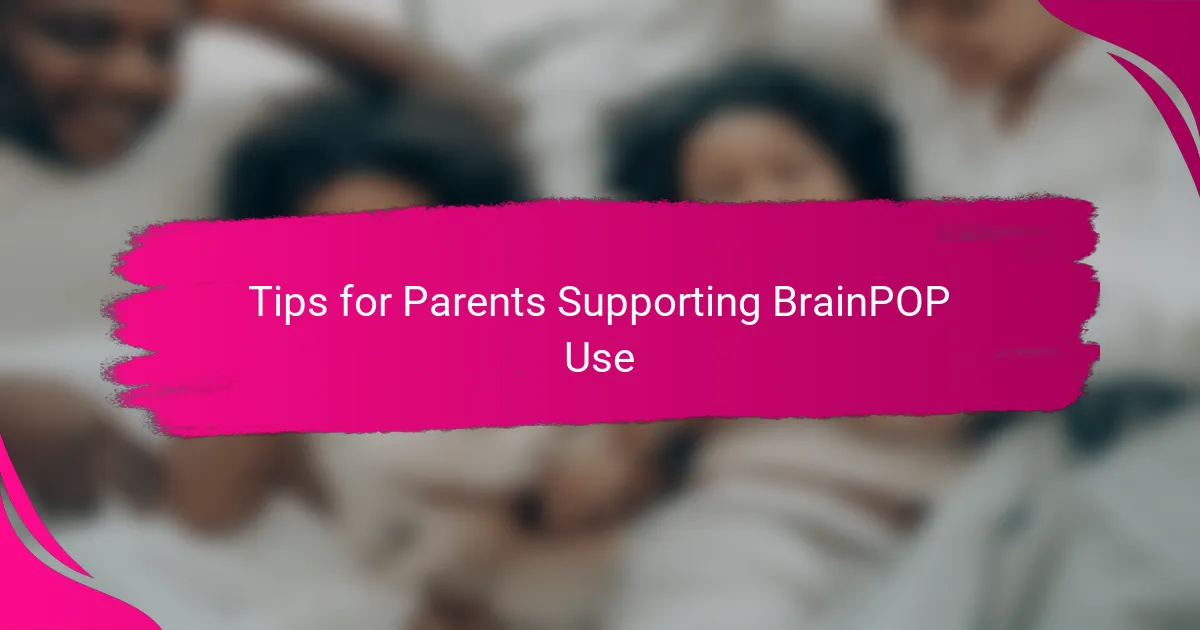
Tips for Parents Supporting BrainPOP Use
Supporting your child’s use of BrainPOP starts with showing genuine interest. When I took a few minutes to watch a video alongside my child, it sparked fun conversations and made them feel proud to share what they’d learned. Have you noticed how kids light up when parents join in? It’s a simple way to boost motivation.
Another tip that worked well for me was setting a regular BrainPOP time without making it feel like a chore. We found that a short session after homework became a rewarding break rather than extra work. Do you think balancing structure with flexibility could help keep your child’s enthusiasm alive? From my experience, it definitely does.
Lastly, stay curious about your child’s questions after BrainPOP lessons. Sometimes they ask things I hadn’t thought of, which pushed me to explore answers with them. That shared discovery made learning feel like an adventure, not just screen time. Have you tried turning those moments into bonding experiences? It’s one of the best parts of supporting education at home.
